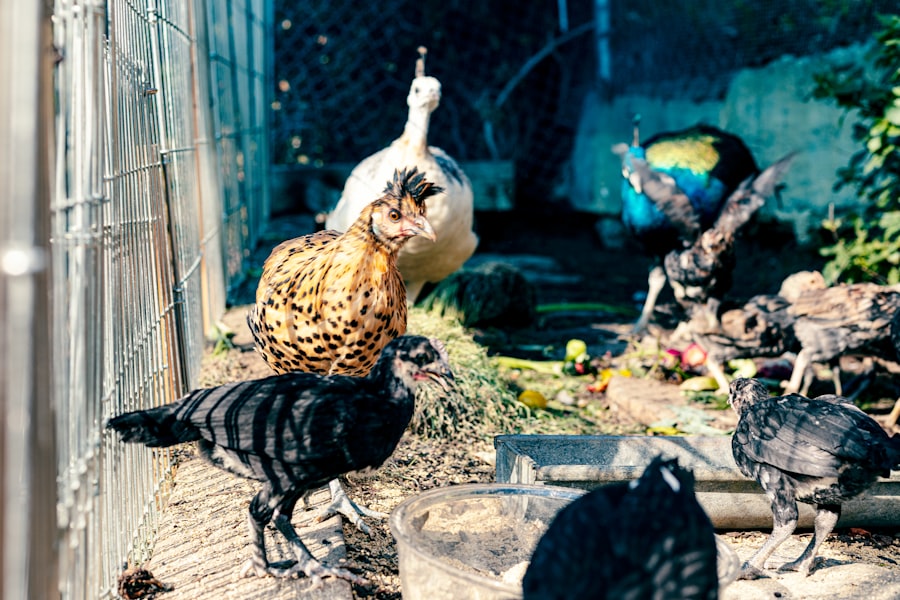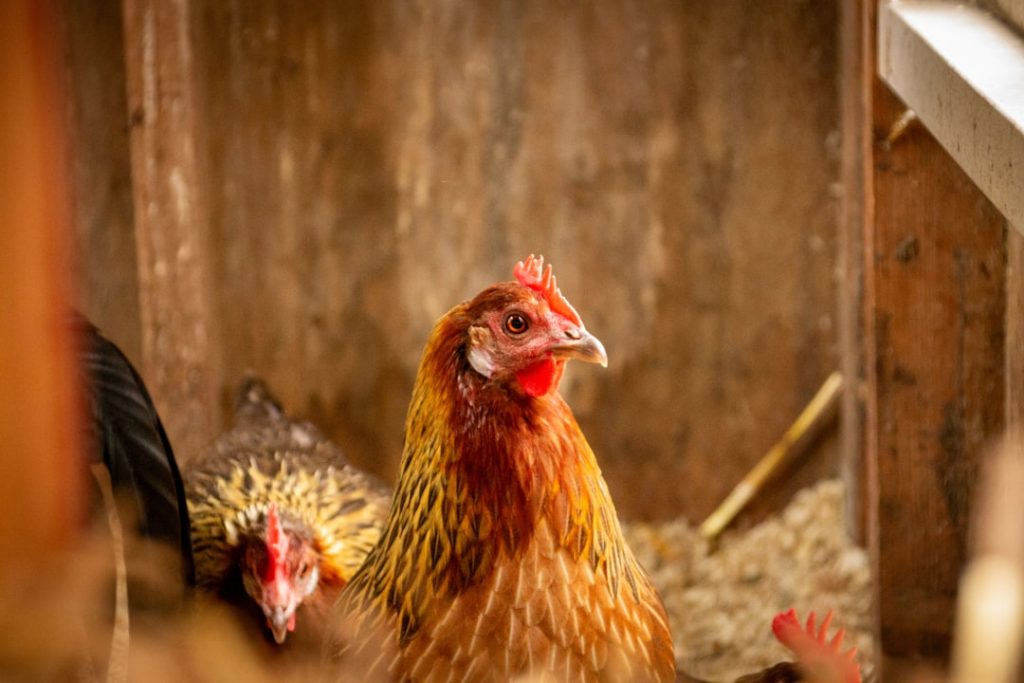When establishing a backyard chicken coop, several initial investments are necessary. The primary expense is the coop and run, which can be constructed as a DIY project or purchased pre-made from farm supply stores. Chickens themselves are another cost, ranging from $3 to $30 per bird depending on breed and age.
Additional expenses include feeders, waterers, bedding, and maintenance tools. Predator prevention is crucial and may require investments in fencing or other protective measures. The cost for this can vary from a few hundred to over a thousand dollars, depending on the coop size and local predator activity.
Local regulations may necessitate permits or licenses for keeping backyard chickens. It is essential to check with local authorities regarding these requirements before starting. Initial investments for a backyard chicken coop encompass the coop and run, chickens, feeding and watering equipment, bedding, maintenance tools, predator prevention measures, and any required permits or licenses.
Proper budgeting for these expenses is vital for a successful and sustainable chicken-keeping endeavor.
Table of Contents
Key Takeaways
- Initial investment in setting up a coop and run for chickens includes purchasing or building a suitable shelter and fencing.
- Monthly expenses for keeping chickens include feed, bedding, and any additional supplements or treats.
- Coop and run maintenance involves regular cleaning, checking for wear and tear, and ensuring predator-proofing measures are in place.
- Providing a balanced diet for chickens includes purchasing feed and supplements such as calcium or grit.
- Veterinary care for chickens may include regular check-ups, vaccinations, and treatment for any illnesses or injuries.
- Predation prevention measures such as secure fencing, predator-proofing the coop, and using deterrents may require additional costs.
- Additional costs to consider include equipment for egg collection, incubation, and any unexpected expenses for repairs or emergencies.
Monthly Expenses
Once your backyard chicken coop is up and running, there are several monthly expenses to consider. The most significant of these expenses is feed. On average, a laying hen will consume about 1/4 to 1/3 pound of feed per day.
Depending on the size of your flock, this can add up to a significant monthly expense. Additionally, you’ll need to budget for bedding, which will need to be replaced regularly to maintain a clean and healthy coop environment. Other monthly expenses include electricity for any coop heating or lighting, as well as water for your chickens.
Another monthly expense to consider is the cost of any supplements or treats you provide for your chickens. This can include items such as oyster shell for calcium supplementation, as well as occasional treats like mealworms or kitchen scraps. Additionally, you’ll need to budget for any ongoing maintenance or repairs for the coop and run.
This can include things like replacing worn-out feeders or waterers, repairing damaged fencing, or addressing any other wear and tear that may occur over time. In conclusion, maintaining a backyard chicken coop comes with several monthly expenses, including feed, bedding, electricity, water, supplements and treats, and ongoing maintenance and repairs. It’s important to budget for these expenses to ensure the health and well-being of your flock while also maintaining a sustainable chicken-keeping operation.
Coop and Run Maintenance

Maintaining the coop and run is an essential aspect of keeping backyard chickens. Regular maintenance helps ensure a clean and healthy environment for your flock while also prolonging the life of your coop and run. One important aspect of coop and run maintenance is cleaning.
This includes regularly removing soiled bedding, cleaning feeders and waterers, and scrubbing down any surfaces that may become soiled with droppings. Additionally, you’ll need to regularly inspect the coop and run for any signs of wear and tear or damage that may need to be addressed. Another aspect of coop and run maintenance is pest control.
This includes regularly checking for signs of pests such as mites or rodents and taking appropriate measures to address any infestations. Additionally, you’ll need to regularly inspect the fencing and other predator prevention measures to ensure they are in good working order. Finally, regular maintenance also includes addressing any structural issues that may arise over time.
This can include things like repairing rotted wood, replacing damaged roofing or siding, or addressing any other wear and tear that may occur. In conclusion, maintaining the coop and run is crucial for keeping backyard chickens healthy and safe while also prolonging the life of your infrastructure. Regular cleaning, pest control, predator prevention, and structural maintenance are all important aspects of coop and run maintenance that should be budgeted for as part of your overall chicken-keeping expenses.
Feed and Supplements
Feed is one of the most significant ongoing expenses when it comes to keeping backyard chickens. The type of feed you choose will depend on the age and purpose of your flock. For example, laying hens require a different type of feed than growing chicks or meat birds.
Additionally, there are different types of feed available, including conventional pellets or crumbles, organic feed, and non-GMO options. The cost of feed can vary depending on the type and quality you choose, so it’s important to budget accordingly. In addition to regular feed, you may also need to budget for supplements or treats for your chickens.
For example, laying hens may benefit from calcium supplementation in the form of oyster shell to support strong eggshells. Additionally, occasional treats such as mealworms or kitchen scraps can provide enrichment for your flock. It’s important to provide these supplements and treats in moderation to ensure a balanced diet for your chickens.
In conclusion, feed is a significant ongoing expense when it comes to keeping backyard chickens. It’s important to budget for the appropriate type and quantity of feed based on the age and purpose of your flock. Additionally, supplements and treats can provide added nutrition and enrichment for your chickens but should be provided in moderation to maintain a balanced diet.
Veterinary Care
While chickens are generally hardy animals, there may be occasions when veterinary care is necessary. It’s important to budget for potential veterinary expenses as part of your overall chicken-keeping costs. One common reason for seeking veterinary care is illness or injury.
Chickens can be susceptible to various health issues such as respiratory infections, parasites, or injuries from predators or accidents. In these cases, it’s important to have a trusted poultry veterinarian who can provide appropriate care for your flock. Another reason for seeking veterinary care is for routine health maintenance.
This can include things like vaccinations or deworming treatments to prevent common poultry diseases. Additionally, regular check-ups with a poultry veterinarian can help ensure the overall health and well-being of your flock. It’s important to factor in these potential veterinary expenses when budgeting for your backyard chicken coop.
In conclusion, veterinary care is an important aspect of responsible chicken-keeping. While chickens are generally hardy animals, it’s important to budget for potential veterinary expenses in case of illness, injury, or routine health maintenance needs.
Predation Prevention

Securing the Coop and Run
One important aspect of predation prevention is securing the coop and run with sturdy fencing or other barriers that are difficult for predators to breach. This can include burying hardware cloth around the perimeter of the coop to prevent digging from below or installing a secure roof to prevent attacks from above.
Providing Secure Housing
Another important aspect of predation prevention is providing secure housing for your chickens at night. This can include locking them inside the coop with sturdy latches or using predator-proof latches on doors and windows.
Regular Inspections and Maintenance
Additionally, it’s important to regularly inspect the coop and run for any signs of wear or damage that may compromise its security against predators.
In conclusion, predation prevention is crucial for keeping backyard chickens safe from harm. Securing the coop and run with sturdy fencing or barriers and providing secure housing at night are important measures that should be budgeted for as part of your overall chicken-keeping expenses.
Additional Costs
In addition to the initial investments and ongoing expenses mentioned earlier, there are several additional costs to consider when keeping backyard chickens. One potential additional cost is the purchase of additional equipment or infrastructure as your flock grows. For example, if you decide to expand your flock or add new amenities such as a dust bath area or outdoor roosts, you may need to invest in additional supplies.
Another potential additional cost is the purchase of new chickens to replace older birds as they age out of laying or reach the end of their natural lifespan. Additionally, there may be unexpected costs that arise from time to time such as emergency repairs or unforeseen veterinary expenses. It’s important to have a contingency fund set aside for these potential additional costs.
In conclusion, keeping backyard chickens comes with several potential additional costs beyond the initial investments and ongoing expenses mentioned earlier. These can include the purchase of additional equipment or infrastructure as your flock grows, the replacement of older birds, and unexpected costs that may arise from time to time. It’s important to budget accordingly to ensure a sustainable chicken-keeping operation.
If you’re considering keeping chickens, you may also be interested in learning about the best chicken coop and run plans. Poultry Wizard offers a helpful article on chicken coop and run plans to help you create a suitable living space for your feathered friends. This resource can provide valuable information on the cost and effort involved in keeping chickens, as well as tips for creating a comfortable and safe environment for them.
FAQs
What are the initial costs of keeping chickens?
The initial costs of keeping chickens include purchasing a coop, feeders, waterers, bedding, and of course, the chickens themselves. These costs can vary depending on the size and quality of the items purchased.
What are the ongoing expenses of keeping chickens?
Ongoing expenses for keeping chickens include the cost of feed, bedding, and any necessary medical care. Additionally, there may be costs associated with replacing or repairing equipment and maintaining the coop and run.
How much does chicken feed cost?
The cost of chicken feed can vary depending on the type and quality of feed purchased. On average, a laying hen will consume about 1/4 to 1/3 pound of feed per day, so the cost of feed will depend on the number of chickens being kept.
Are there any unexpected costs associated with keeping chickens?
There can be unexpected costs associated with keeping chickens, such as veterinary care for sick or injured birds, predator-proofing the coop and run, and any necessary repairs or upgrades to the chicken keeping setup.
What are the potential cost savings of keeping chickens?
Keeping chickens can lead to cost savings in the form of fresh eggs, reduced food waste (chickens can eat kitchen scraps), and the potential for natural pest control in the garden. However, it’s important to weigh these potential savings against the initial and ongoing expenses of keeping chickens.
Meet Walter, the feathered-friend fanatic of Florida! Nestled in the sunshine state, Walter struts through life with his feathered companions, clucking his way to happiness. With a coop that’s fancier than a five-star hotel, he’s the Don Juan of the chicken world. When he’s not teaching his hens to do the cha-cha, you’ll find him in a heated debate with his prized rooster, Sir Clucks-a-Lot. Walter’s poultry passion is no yolk; he’s the sunny-side-up guy you never knew you needed in your flock of friends!







